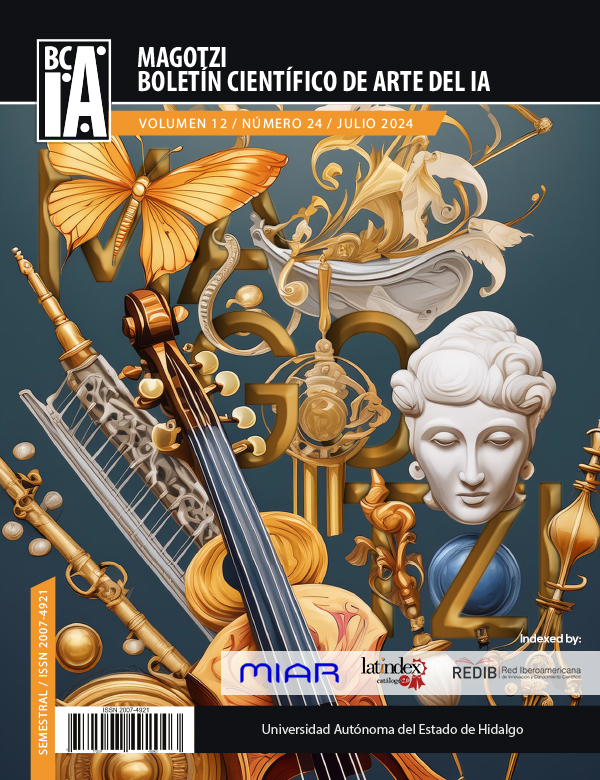Voice for voiceless.
Dance against animal mistreatment in food industries
Abstract
Animal abuse in food industries represents practices that culminate in pain and suffering for these beings, being processes that are detrimental to their well-being for the sake of trade. This has led to various current debates, such as those promoted by groups or communities that declare themselves against them, such as animal activists, vegans, vegetarians, among others. The practices of these industries have been questioned for their treatment of animals involved in the production of meat, milk, eggs and other products.
Starting from these premises as triggers, I carried out an investigation that explores the characteristics of the practices of these industries, as well as a dance creation that represents the mistreatment and agony that these animals experience, to the point of being massacred and sacrificed. This in order to raise awareness about the damage that is being caused to these living beings.
In my choreographic proposal “Voice for voiceless”, I addressed, from an artistic perspective, the topic of cruelty and suffering of animals in the food industries as a representation of violence against these beings. The objective of this was to lead the public to reflect through artivism.
Downloads
References
Castañeda, Hidalgo, Hortensia (2015). Contra el maltrato de los animales. Ciencia UAT, 5(4), 8-11. ISSN: 2007-7521.
Díaz, E. (2012) Perfil vegano/a del activista de liberación animal en España. Revista Española de Investigaciones Sociológicas, núm. 139, julio-septiembre, 2012, pp. 175-187
Escobar, A. (2018). Qué es y en que consiste Danza Contemporánea. ESAEM. Recuperado de: https://www.esaem.com/noticias/que-es-y-en-que-consiste-la-danza-contemporanea/
Equipo editorial, Etecé. (2021) Relaciones interespecíficas. De: Argentina. Para: Concepto.de. Disponible en: https://concepto.de/relaciones-interespecificas/
Frandsen, G. (2013). El hombre y el resto de los animales. TINKUY, 20, pp. 56-78
Garmendia, A. (2017). Mataderos en México: investigación en el corazón de la industria cárnica. 2018, de TRASLOSMUROS Sitio web: https://traslosmuros.com/mataderos-rastros-mexico-investigacion
Gutiérrez, C. (2009): El movimiento animalista: análisis desde los nuevos movimientos sociales. Mimeo. España (en línea).
Gutiérrez, P. (2016). "El maltrato y abuso a la vida animal". Mayo, de Universidad de Costa Rica
Herzog, H. (2012). Los amamos, los odiamos y los comemos. Esa relación tan especial con los animales. Barcelona: Editorial Kairós S.A
Joy, M. (2013). Por qué amamos a los perros, comemos con cerdos y nos vestimos con vacas. Murcia: Plaza y Valdés S.L
Matos, L. (2019), El maltrato animal En la producción de alimentos. Análisis jurídico-penal. 08 diciembre, de Revista cuatrimestral de las Facultades de Derecho y Ciencias Económicas y Empresariales.
Ortega Centella. (2011) El artivismo como acción estratégica de nuevas narrativas artístico-políticas. Calle14: revista de investigación en el campo del arte. Disponible en: https://www.redalyc.org/articulo.oa?id=279038948008
Pana, M. (2020) Artivismo. La reivindicación desde el arte. Art Madrid. [13]. Reza, G. (2017). La crueldad contra los animales en los mataderos de México, documentada por un fotoperiodista español. 21 de noviembre, de Proceso Sitio web: https://www.proceso.com.mx/reportajes/2017/11/21/la-crueldad-contra-los-animales-en-los-mataderos-de-mexico-documentada-por-un-fotoperiodista-espanol-195247.html
Parga, P. (2018) InvestiCreación Artística. Metodología para la investigación artística en el ámbito universitario y de la educación superior. P. 38-49
Paz, M. (2016). La diversidad corporal en la danza contemporánea: una mirada retrospectiva al siglo XX. Arte, Individuo y Sociedad, Madrid, España.
Rodríguez, P. (2018). Animales sin voz. 2018, de Universidad de los Andes
Senado de la República. (2019). Busca Congreso evitar crueldad en rastros del país. 26 de julio, de Coordinación de comunicación social.
Singer, P. (1990). Liberación animal, Ed. Trotta, Madrid, España.
Vanda, B. (s.a) Evidencias de que los animales vertebrados experimentan emociones y estados mentales. Recuperado de: https://www.fmvz.unam.mx/fmvz/p_estudios/apuntes_bioet/Unidad_2_sentimientos.pdf
Copyright (c) 2024 Yadira Escárcega Portillo

This work is licensed under a Creative Commons Attribution-NonCommercial-NoDerivatives 4.0 International License.











